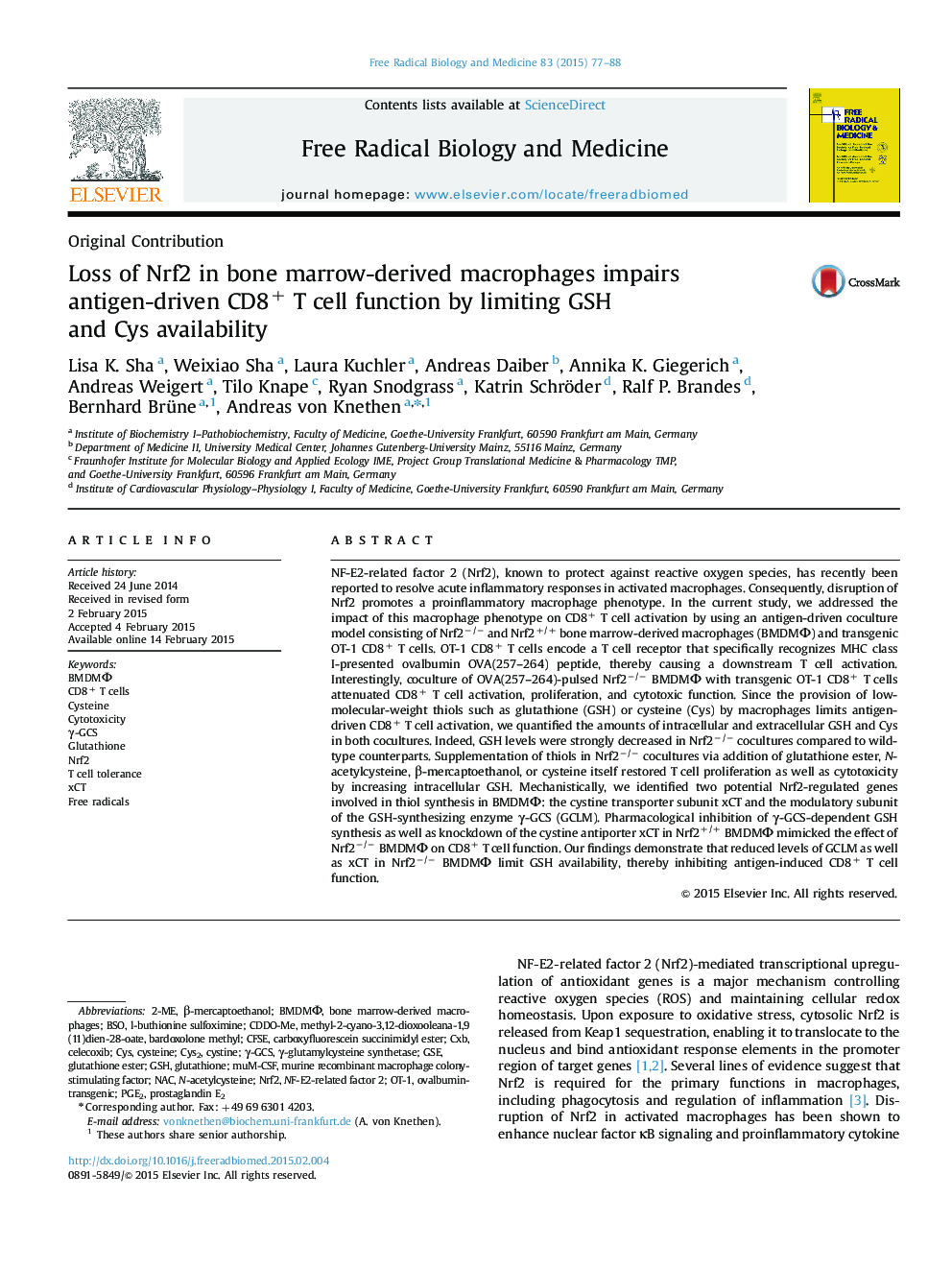| Article ID | Journal | Published Year | Pages | File Type |
|---|---|---|---|---|
| 1907955 | Free Radical Biology and Medicine | 2015 | 12 Pages |
•Loss of Nrf2 in BMDMΦ impairs OVA(257–264)-mediated CD8+ OT-1 T cell function.•Neither costimulation nor NO or PGE2 explains Nrf2−/− BMDMΦ-induced CD8+ T cell suppression.•Cys and GSH availability defines CD8+ OT-1 T cell function in Nrf2−/− cocultures.•Reduced xc− or GCLM expression mimics the Nrf2−/− coculture phenotype.
NF-E2-related factor 2 (Nrf2), known to protect against reactive oxygen species, has recently been reported to resolve acute inflammatory responses in activated macrophages. Consequently, disruption of Nrf2 promotes a proinflammatory macrophage phenotype. In the current study, we addressed the impact of this macrophage phenotype on CD8+ T cell activation by using an antigen-driven coculture model consisting of Nrf2−/− and Nrf2+/+ bone marrow-derived macrophages (BMDMΦ) and transgenic OT-1 CD8+ T cells. OT-1 CD8+ T cells encode a T cell receptor that specifically recognizes MHC class I-presented ovalbumin OVA(257–264) peptide, thereby causing a downstream T cell activation. Interestingly, coculture of OVA(257–264)-pulsed Nrf2−/− BMDMΦ with transgenic OT-1 CD8+ T cells attenuated CD8+ T cell activation, proliferation, and cytotoxic function. Since the provision of low-molecular-weight thiols such as glutathione (GSH) or cysteine (Cys) by macrophages limits antigen-driven CD8+ T cell activation, we quantified the amounts of intracellular and extracellular GSH and Cys in both cocultures. Indeed, GSH levels were strongly decreased in Nrf2−/− cocultures compared to wild-type counterparts. Supplementation of thiols in Nrf2−/− cocultures via addition of glutathione ester, N-acetylcysteine, β-mercaptoethanol, or cysteine itself restored T cell proliferation as well as cytotoxicity by increasing intracellular GSH. Mechanistically, we identified two potential Nrf2-regulated genes involved in thiol synthesis in BMDMΦ: the cystine transporter subunit xCT and the modulatory subunit of the GSH-synthesizing enzyme γ-GCS (GCLM). Pharmacological inhibition of γ-GCS-dependent GSH synthesis as well as knockdown of the cystine antiporter xCT in Nrf2+/+ BMDMΦ mimicked the effect of Nrf2−/− BMDMΦ on CD8+ T cell function. Our findings demonstrate that reduced levels of GCLM as well as xCT in Nrf2−/− BMDMΦ limit GSH availability, thereby inhibiting antigen-induced CD8+ T cell function.
Graphical abstractFigure optionsDownload full-size imageDownload high-quality image (286 K)Download as PowerPoint slide
